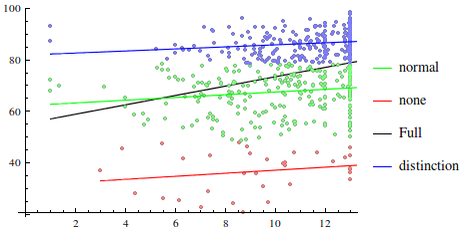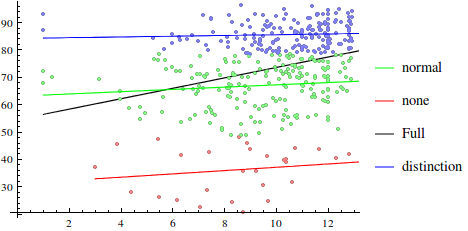OK, so I have data from a class that had a preparatory self-test to see how prepared they were for the class, and the final results for the class. The preparatory self-test had a range from 0..13 and the final had a range from 0..100.
(don't mind the normal, none, distinction legend, that's just the class (Coursera) had a threshold for certificates at 50%, and you'd get a "with distinction" above 80%)
But, here, look at these two graphs:

(source: hex21.com)

(source: hex21.com)
The correlation coefficient for the full data set is r=0.29782 and if I remove the 13s from the preparatory self-test becomes r=0.294383, so I guess the correlation doesn't change all that much.
But, I guess my question was more sort of, is it valid/a good idea to remove the 13's from the preparatory test?
Here's what I was thinking: The final seems to be valid for the set of students being tested. But, you really can't distinguish between one student who got a 13 and another who got a 13, because they "maxed" out the test. (Like if you had a scale that measured up to 100 grams, and you put an elephant, a whale and a chicken on it, and declared them all to be "100 grams")
What should one do if the test is being maxed out by certain people? Is it better to leave it in, to remove it, or to do something else altogether with it?
Thanks!
